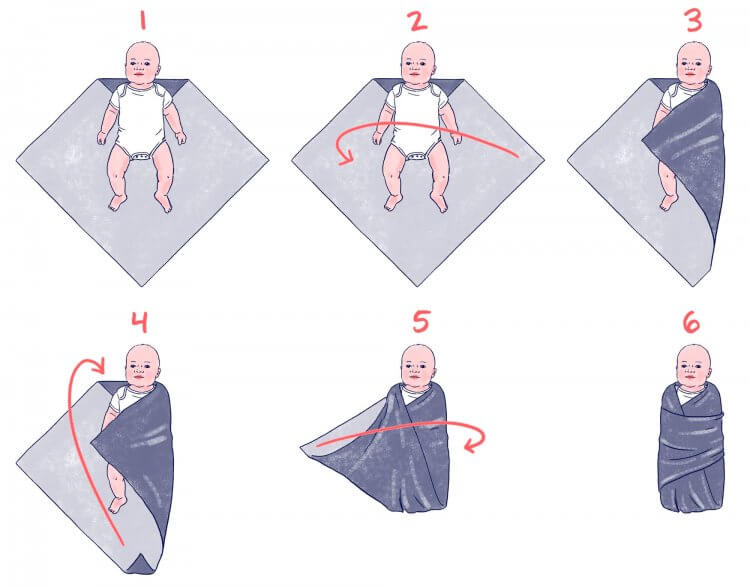
Swaddling is one of the oldest and most trusted ways to help newborns feel calm and secure. But walk down the baby aisle or search online, and you’ll quickly discover that there’s more than one way to wrap a baby—and more than one type of fabric to use.
From traditional blankets to modern zip-up sacks, and from cotton muslin to stretchy bamboo, choosing the right swaddling method and material can make a big difference in how well your baby sleeps.
Here’s a guide to different swaddling techniques and materials to help you find what works best for your little one.
Why Swaddling Matters for Sleep
Before diving into the details, it’s worth remembering why swaddling is so effective:
-
Soothes the startle reflex (Moro reflex) that can wake babies unexpectedly
-
Recreates the snug feeling of the womb
-
Encourages longer and deeper sleep
-
Provides a calming, predictable part of the bedtime routine
Now let’s explore the how and the what of swaddling.
Common Swaddling Techniques
1. The Traditional Swaddle (Blanket Wrap)

This is the classic method using a square swaddle blanket.
How to do it:
-
Lay the blanket in a diamond shape and fold down the top corner.
-
Place your baby with their shoulders just below the fold.
-
Wrap one side across the baby and tuck it under their body.
-
Fold the bottom up over their feet.
-
Wrap the other side and tuck it snugly.
Best for: Parents who want control over the tightness and positioning.
Tip: Practice makes perfect! Use lightweight, breathable fabric.
2. The Arms-Up Swaddle

Some babies don’t love having their arms pinned down. Arms-up swaddles allow a more natural position while still controlling the startle reflex.
How it works: These usually come in the form of zip-up sacks with wing-shaped arm areas.
Popular brand example: Love to Dream™ Swaddle UP
Best for: Babies who resist traditional swaddles but still need some containment.
3. The Swaddle Sack (Velcro or Zippered)
Modern swaddle sacks use Velcro flaps or zippers to make swaddling quick and secure, with less room for error.
How it works: Just place the baby inside the pouch and secure the wings or zip it up.
Popular brand examples: Halo® SleepSack Swaddle, SwaddleMe®
Best for: Parents looking for convenience and consistency.
Tip: Check for options that allow one or both arms to be left out as baby grows.
4. Hybrid and Transitional Swaddles

These swaddles help transition your baby out of full swaddling as they begin to roll over. They allow arm movement while keeping the rest of the body snug.
Examples: Zipadee-Zip®, Merlin’s Magic Sleepsuit®
Best for: Older babies (usually 3+ months) who are too wiggly for a traditional swaddle but still crave security.
Choosing the Right Swaddling Material
Not all fabrics are created equal—especially when sleep and safety are involved.
1. Cotton Muslin
-
Lightweight, breathable, and soft
-
Ideal for warmer climates or layering
-
Becomes softer with every wash
Pros: Versatile and widely available
Cons: Less stretchy, so requires careful wrapping to stay in place
2. Bamboo or Bamboo Viscose
-
Naturally breathable and moisture-wicking
-
Incredibly soft and stretchy
Pros: Great for sensitive skin and temperature regulation
Cons: Can be more expensive
3. Cotton Knit or Jersey
-
Slightly thicker and more elastic than muslin
-
Offers a secure stretch for snug wrapping
Pros: Holds shape well, perfect for cooler rooms
Cons: May be too warm in hot climates
4. Fleece or Flannel
-
Cozy and warm, ideal for winter months
Pros: Great for cold environments
Cons: Can overheat baby—monitor temperature closely
Swaddle Safety Tips
-
Always lay baby on their back to sleep.
-
Stop swaddling once your baby shows signs of rolling over (usually around 2–4 months).
-
Make sure the swaddle is snug around the arms but loose at the hips to avoid hip dysplasia.
-
Don’t overheat. Use lightweight layers and keep the room between 68–72°F (20–22°C).
Conclusion
Swaddling is more than just wrapping—it's about creating comfort, security, and a reliable sleep cue for your baby. Whether you go traditional with a muslin wrap or prefer the ease of a zip-up swaddle sack, the key is choosing what works for your baby’s temperament and your comfort level.
With the right technique and material, swaddling can be a powerful part of your baby’s sleep routine—and a much-needed support for weary parents everywhere.
If you or someone you know struggles with sleep, please click the orange button below to take a free online sleep test and talk with one of our sleep health professionals.

